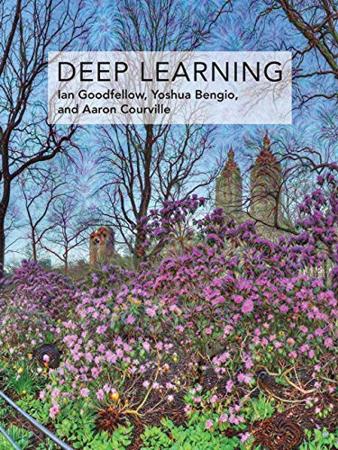| Inventor Of GANs Joins Apple |
| Written by Sue Gee | |||
| Friday, 05 April 2019 | |||
|
Ian Goodfellow has updated his LinkedIn entry to disclose that since March he has been employed by Apple as a Director of Machine Learning in the Special Projects Group. Ian Goodfellow's main claim to fame is for the Generative Adversarial Network (GAN) which he described to me in an interview two years ago saying: A GAN is a machine learning model that can generate new data that resembles the training data. For example, after training on a dataset containing pictures of dogs, a GAN could generate a new picture of an imaginary dog that has never been seen before. GANs have been in our news reports for creating fake images and for marketable artworks, as well as having a useful role in creating data for machine learning to work with. If you want to know more about GANs, it's a topic discussed in this 2017 interview of Ian Goodfellow by Andrew Ng in the Heroes of Machine Learning series. Ng also asks Goodfellow, how he got interested in machine learning and how his thinking about deep learning and AI has evolved in over 10 years involvement in it:
As also mentioned in both interviews Goodfellow coauthored a textbook on deep learning with his PhD supervisors, Yoshua Bengio and Aaron Courville.
Goodfellow's move from Google to Apple is described in other reports as a case of "poaching" in which, to quote Business Insider: Apple has prized another AI superstar away from Google. The "another" refers to John Giannandrea, formerly Google’s chief of search and artificial intelligence, who was hired by Apple in April 2018 to assume the role of Senior Vice President of Machine Learning and AI strategy. From Ian Goodfellow's LinkedIn profile it is clear that he is willing to make career moves, as long as his stardom continues to increase. Now 35 years old, Goodfellow did his BSC and MSc at Stanford from 2004 to 2009. He then interned at Willow Garage, the robotics research lab that originated the Robotics Operating System before doing his PhD under the supervision of Yoshua Bengio and Aaron Courville at the University of Montreal. As a summer intern at Google in 2013 he helped create a deep deep neural network capable of reading address numbers from Street View imagery and, having completed his PhD, was hired by Google where he contributed to TensorFlow and was a member of the Google Brain team. In March 2016 he joined the recently launched OpenAI but returned to Google after just over a year becoming a Senior Staff Research Scientist before his move to Apple. So what use will Apple make of Goodfellow's talents? Although not as prominently involved with AI as Google or Facebook, Apple's machine learning framework Core ML debuted in 2017 for use across Apple products, including Siri, Camera and Quick Type. When it was announced at WWDC in June 2017 we commented that it seemed to be along the lines of Microsoft's Cognitive Toolkit, although more limited. In 2018, again at WWDC, Apple announced Core ML 2, a much faster version that offers over 30 layer types, together with Create ML, a framework that lets users easily build machine learning models, with no machine learning expertise required. Apple has also been working on a self-driving car with its secretive Project Titan. In January 2019 it cut or reassigned 200 workers from this project telling CBNC: "We have an incredibly talented team working on autonomous systems and associated technologies at Apple. As the team focuses their work on several key areas for 2019, some groups are being moved to projects in other parts of the company, where they will support machine learning and other initiatives, across all of Apple. We continue to believe there is a huge opportunity with autonomous systems, that Apple has unique capabilities to contribute, and that this is the most ambitious machine learning project ever." Also in January Apple CEO Tim Cook talked in an interview for CNBC Mad Money about prioritizing health among Apple's efforts saying: "If you zoom out into the future, and you look back, and you ask the question: 'What was Apple's greatest contribution to mankind?', it will be about health. We're democratizing it. We're taking what has been with the institutions and empowering the individual to manage their health." Machine Learning and AI could certainly have a role to play in this. All we can say without unfounded speculation is that by wanting to strengthen its hold in this area, Apple is following the current trend of technology companies of putting AI/ML/Deep Leaning at the heart of everything. More InformationRelated ArticlesAI Goes Open Source To The Tune Of $1 Billion Christies To Auction AI-Generated Artwork The Flaw Lurking In Every Deep Neural Net To be informed about new articles on I Programmer, sign up for our weekly newsletter, subscribe to the RSS feed and follow us on Twitter, Facebook or Linkedin.
Comments
or email your comment to: comments@i-programmer.info
|
|||
| Last Updated ( Friday, 05 April 2019 ) |




